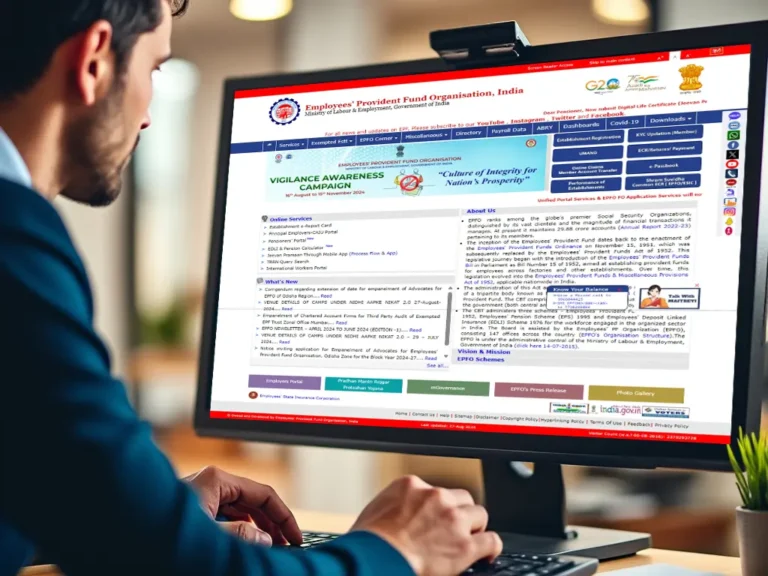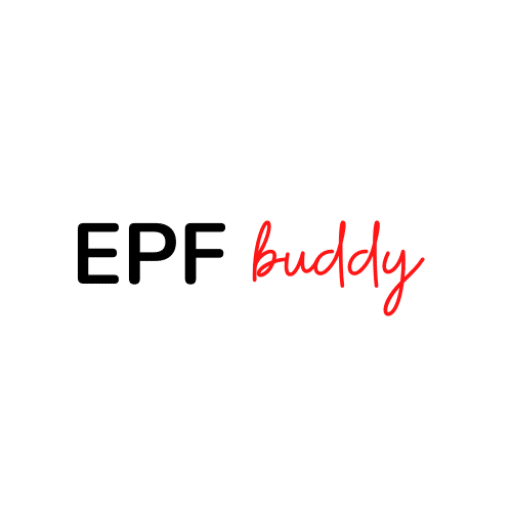What is a Provident Fund, and How Does it Work in India?

Understanding Provident Fund in India
The Provident Fund (PF) is a well-established retirement savings scheme designed by the Government of India to help employees accumulate funds for their post-retirement life. It’s a form of social security that aims to provide financial stability and security to employees once they retire from active employment. The scheme is built on the principle of gradual savings, where both the employee and employer contribute a specific portion of the employee’s salary into the fund on a monthly basis. Over time, this fund grows due to regular contributions and the accumulation of interest, enabling employees to retire with a significant amount of savings.
Provident Fund contributions are mandatory for salaried employees in India, particularly in the organized sector. The contributions are regulated and managed by the Employees’ Provident Fund Organization (EPFO), a statutory body under the Ministry of Labour and Employment, Government of India. For employees, Provident Fund acts as a tool to save a part of their income every month and secure their future. For employers, it’s a responsibility to ensure that the contribution is made regularly, as mandated by law.
Key Features of Provident Fund
Provident Fund in India has distinct features that set it apart from other retirement savings schemes. Some of the prominent features are:
- Compulsory Contributions: Both the employer and the employee are mandated to contribute 12% of the employee’s basic salary and dearness allowance to the PF account. This ensures a steady inflow of funds into the account, which can grow substantially over time.
- Interest Accrual: The money in the Provident Fund account is not stagnant; it earns interest on a yearly basis. The interest rate is announced by the EPFO and is generally higher than the interest rate offered by regular savings accounts or fixed deposits. This feature ensures that the funds keep growing even without additional contributions.
- Withdrawal Eligibility: PF savings can be withdrawn fully or partially under certain conditions. Full withdrawal is allowed upon retirement, or after remaining unemployed for a specified period. Partial withdrawals are permitted for specific purposes, such as marriage, medical emergencies, home loans, or educational expenses.
- Tax Benefits: Provident Fund contributions and interest earned are eligible for tax exemptions under Section 80C of the Income Tax Act, 1961. This makes it an attractive investment option for tax savings as well.
- Universal Account Number (UAN): Every employee is provided with a unique UAN, which acts as an umbrella for all PF accounts associated with different employers over time. The UAN simplifies the process of managing and tracking Provident Fund accounts.
- Loan Facility: The Provident Fund allows employees to take a loan against their accumulated corpus under specific circumstances. This is particularly helpful for employees during financial emergencies, as they can access funds without having to make a full withdrawal.
- Security and Stability: Since Provident Fund is backed by the Government of India, it is a secure investment. The government’s involvement ensures stability and guarantees the protection of the accumulated funds.
Types of Provident Fund in India
The Provident Fund scheme in India is divided into various types, each catering to a specific category of people. The types include:
| Type of Provident Fund | Description |
|---|---|
| Employee Provident Fund (EPF) | The EPF scheme is mandatory for employees working in the organized sector, especially for those whose monthly income is below a certain threshold. Under this scheme, both the employee and employer contribute towards the fund. The contributions made over the years along with accrued interest form a substantial corpus that can be withdrawn post-retirement. |
| Public Provident Fund (PPF) | The PPF scheme is open to all Indian citizens, regardless of whether they are salaried or self-employed. It is a long-term investment scheme with a tenure of 15 years. The PPF account offers tax-free returns and serves as an excellent tool for retirement savings for individuals who may not be eligible for EPF. |
| General Provident Fund (GPF) | The GPF scheme is specifically designed for government employees. It functions similarly to the EPF scheme, where government employees contribute a portion of their salary to the fund each month. Upon retirement, they can withdraw the accumulated corpus with interest. GPF is only applicable to government employees and provides similar benefits as the EPF. |
Benefits of Provident Fund
A Provident Fund is not just a savings mechanism; it offers numerous benefits to employees, making it an essential part of financial planning for the future.
- Financial Security Post-Retirement: The most significant advantage of a Provident Fund is the financial security it provides post-retirement. By contributing a portion of their salary over their employment years, employees can accumulate a substantial amount that acts as a safety net after retirement.
- Tax Savings: Provident Fund contributions are eligible for tax exemptions under Section 80C of the Income Tax Act, 1961. The interest earned and the final maturity amount are also exempted from taxes, subject to certain conditions, making PF a tax-efficient investment.
- Emergency Withdrawals: PF allows partial withdrawals in the case of emergencies like medical treatment, higher education, marriage expenses, or home construction. This feature ensures that employees have a financial cushion during unforeseen circumstances.
- Higher Interest Rates: PF offers higher interest rates than regular savings accounts and even fixed deposits. The interest is compounded annually, leading to better long-term growth of the corpus.
- Loan Against PF: Employees can take loans against their Provident Fund balance for specific purposes. This helps them avoid taking expensive loans from financial institutions, making PF a more affordable borrowing option.
- Risk-Free Investment: Since the Provident Fund is regulated by the government, it is a risk-free investment. Unlike market-linked investment options, PF offers guaranteed returns, making it a stable choice for risk-averse individuals.
- Protection Against Inflation: As the PF balance grows with regular contributions and interest, it helps to safeguard against inflation over time, providing a more substantial corpus upon retirement.
- Easy Transferability: With the UAN, employees can easily transfer their PF account balance when they switch jobs. This ensures continuity in savings without any hassle.
- Building Retirement Corpus Gradually: Provident Fund ensures disciplined saving as both employer and employee contribute towards it. Over time, this leads to a significant retirement corpus.
- Maturity Benefits: Upon retirement or after certain conditions are met, the employee receives the entire amount, which includes both contributions and accumulated interest. This maturity benefit acts as a significant financial asset for retirees.
Importance of UAN (Universal Account Number)
The Universal Account Number (UAN) is a critical component of the Provident Fund system in India. UAN is a unique 12-digit identification number assigned to every employee who contributes to the Provident Fund. The introduction of UAN has significantly simplified the management of multiple PF accounts that employees may have due to job changes.
How UAN Works
The UAN remains the same throughout an employee’s career, irrespective of the number of jobs they switch. When an employee changes jobs, a new PF account is created under the same UAN. This makes it easier for employees to manage all their PF accounts under a single identification number, allowing them to track contributions, withdrawals, and transfers seamlessly.
Benefits of UAN
- Simplified Management: Employees can manage multiple PF accounts under one UAN, reducing the hassle of keeping track of different PF accounts.
- Easy Transfer: With UAN, employees can transfer their PF balance from one account to another when they change jobs.
- Quick Access to Information: Employees can check their PF balance, contributions, and other details online using their UAN, enhancing transparency and accessibility.
- SMS and Email Notifications: The EPFO sends SMS and email notifications about deposits, withdrawals, and other activities associated with the PF account, keeping employees informed.
Who Manages Provident Funds?
The Employees’ Provident Fund Organisation (EPFO) is the statutory body responsible for overseeing Provident Fund accounts in India. EPFO operates under the Ministry of Labour and Employment and has the mandate to enforce the Employees’ Provident Fund and Miscellaneous Provisions Act, 1952.
Functions of EPFO
- Regulation and Compliance: EPFO ensures compliance with PF regulations by both employers and employees, making it mandatory for eligible organizations to register and contribute towards EPF.
- Account Management: EPFO manages the PF accounts of millions of employees across the country, ensuring that contributions and interest accruals are properly recorded.
- Grievance Redressal: EPFO has a robust grievance redressal mechanism to address issues related to PF accounts, contributions, and withdrawals.
- Interest Rate Declaration: EPFO announces the interest rate on PF contributions every financial year, ensuring employees earn returns on their savings.
- Digital Services: EPFO offers online services like UAN activation, PF balance check, transfer, and withdrawal requests through its online portal, enhancing user experience.
Challenges with PF Accounts
Despite the benefits, there are some challenges associated with managing a Provident Fund account:
- Tracking Contributions: Employees may find it challenging to track monthly contributions, especially when their employment history involves multiple job changes.
- Withdrawal Delays: The PF withdrawal process can sometimes be slow, leading to delays in receiving the funds.
- Errors in Account Details: Errors in personal information, such as name or Aadhaar details, can lead to complications in the withdrawal or transfer process. Any discrepancies in details can lead to delays, as corrections require validation from the employer and sometimes additional documentation.
- Difficulty in Claiming Partial Withdrawals: While partial withdrawals are permitted, navigating the documentation and eligibility requirements can be complex. Employees may need assistance in understanding the correct procedures.
- Limited Knowledge on Tax Implications: Many employees are unaware of the tax implications related to PF withdrawals, particularly if they withdraw before five years of continuous service. Early withdrawals may attract taxes, which could reduce the final amount received.
- Challenges with UAN Activation: Although UAN has streamlined the PF management process, activating it and linking Aadhaar and bank accounts can be challenging for some users, especially those with limited digital literacy.
- Issues with Employer Contributions: In some cases, employers may fail to contribute on time or may default on contributions, which can affect the overall PF balance. Employees might need to check their balance regularly to ensure contributions are up to date.
- Limited Awareness of EPFO Digital Services: While EPFO has introduced digital services for PF management, not all employees are familiar with these tools. This can lead to underutilization of convenient services like online balance checks, claim tracking, and e-nomination.
EPF Buddy’s Role in Simplifying PF Management
Given the complexities associated with PF management, EPF Buddy stands as a reliable partner for those seeking help with their Provident Fund. EPF Buddy is a premier PF consultancy service based in Mumbai that assists individuals and businesses with all PF-related matters, from account setup to withdrawal. Here’s how EPF Buddy can make a difference:
- Personalized Guidance: EPF Buddy provides tailored assistance based on each client’s unique requirements, whether it’s setting up a new PF account, managing contributions, or initiating withdrawals.
- Simplifying UAN Activation and Linking: EPF Buddy helps employees activate their UAN, link Aadhaar, and bank accounts, ensuring they can fully utilize the digital services provided by EPFO.
- Expert Assistance in Claim and Withdrawal Processes: EPF Buddy guides clients through the entire withdrawal process, helping them understand eligibility criteria, documentation, and other requirements, making the experience smooth and hassle-free.
- Timely Updates on Regulatory Changes: PF regulations can change from time to time, affecting contribution rates, withdrawal policies, and tax implications. EPF Buddy keeps clients informed about these changes, helping them make informed decisions.
- Employer Consultation: For businesses, EPF Buddy offers services to ensure compliance with EPF regulations, aiding in payroll management, timely contributions, and error-free record-keeping.
- Grievance Handling: If an employee faces issues with their PF account, EPF Buddy can assist in filing grievances with the EPFO and follow up to ensure the issue is resolved efficiently.
- Education and Awareness: EPF Buddy is committed to educating clients about their rights and benefits concerning Provident Fund. Through consultations and informational resources, they empower clients to make the most of their PF.
- Quick Assistance for Partial Withdrawals: EPF Buddy helps clients navigate the partial withdrawal process, ensuring they meet the necessary criteria and submit the correct documentation.
- Ensuring Error-Free Documentation: Errors in PF details can lead to delays in claim processing. EPF Buddy helps ensure that clients’ details are accurate and up to date, minimizing potential issues.
- End-to-End Support for Transfers: If an employee changes jobs, EPF Buddy assists in the smooth transfer of PF balance from the old employer to the new one, ensuring no disruptions in the savings accumulation.
With EPF Buddy by your side, managing your Provident Fund becomes simpler and stress-free. Whether you’re looking to understand the basics of PF, require assistance with UAN activation, or need help with a withdrawal claim, EPF Buddy is here to provide comprehensive support.
Resources for Further Learning
To help users deepen their understanding of Provident Fund, EPF Buddy provides a range of resources and services that can be accessed online:
- EPF Buddy’s Services: Explore the full range of services offered by EPF Buddy, from PF management and compliance to withdrawal assistance.
- Privacy Policy: Learn about EPF Buddy’s commitment to safeguarding your data and maintaining confidentiality in all transactions.
- About EPF Buddy: Get to know the team behind EPF Buddy and their mission to simplify PF management in India.
- Frequently Asked Questions (FAQ): Have more questions? Visit the FAQ page to find answers to common queries about Provident Fund and related processes.
- Contact EPF Buddy: Need personalized support? Reach out to EPF Buddy’s expert team to discuss your specific PF needs.
In conclusion, while the Provident Fund scheme in India offers numerous benefits and acts as a vital financial resource post-retirement, managing it can be challenging due to regulatory intricacies and procedural hurdles. For individuals and businesses alike, EPF Buddy provides trusted support, ensuring that managing Provident Fund becomes a seamless experience. Whether you’re setting up a new PF account, making a withdrawal, or navigating complex regulations, EPF Buddy is dedicated to helping you secure your financial future with ease.






